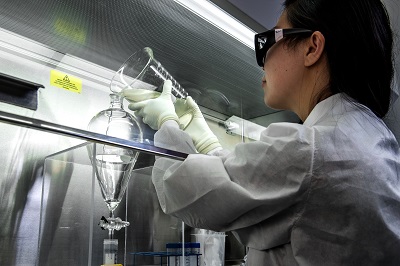What preparations should be made before applying for Class III medical device registration with the TGA in Australia?
Release time:2024-10-08 16:36:40
The author:
source:
Familiarize Yourself with TGA Regulations: Review the Therapeutic Goods Act 1989 and the Therapeutic Goods (Medical Devices) Regulations 2002 to understand the regulatory requirements specific to Class III devices.
Before applying for Class III medical device registration with the Therapeutic Goods Administration (TGA) in Australia, it's crucial to undertake thorough preparations to ensure a smooth application process. Here’s a detailed checklist of the key preparations you should make:
1. Understand the Regulatory Framework
- Familiarize Yourself with TGA Regulations: Review the Therapeutic Goods Act 1989 and the Therapeutic Goods (Medical Devices) Regulations 2002 to understand the regulatory requirements specific to Class III devices.
- Know the Essential Principles: Ensure you understand the Essential Principles that govern safety, performance, and clinical evidence requirements.
2. Conduct a Regulatory Pathway Assessment
- Identify the Device Classification: Confirm that your device is classified as Class III based on its intended purpose and risk profile.
- Assess Conformity Assessment Requirements: Determine if your device requires a conformity assessment from a TGA-recognized Notified Body.
3. Quality Management System (QMS)
- Implement ISO 13485: Ensure that you have a Quality Management System in place that complies with ISO 13485:2016 standards, which governs quality processes for medical devices.
- Document QMS Procedures: Create and document all relevant procedures and policies, including those related to design control, manufacturing, and post-market surveillance.
4. Risk Management
- Develop a Risk Management Plan: Prepare a risk management plan in accordance with ISO 14971:2019. This should identify potential hazards associated with the device, assess risks, and outline risk control measures.
- Document Risk Analysis: Conduct a thorough risk analysis and document the findings, including justifications for any residual risks.
5. Gather Clinical Evidence
- Collect Clinical Data: Prepare comprehensive clinical evidence that demonstrates the safety and efficacy of the device for its intended use. This may include:
- Clinical trial data.
- Literature reviews.
- Post-market surveillance data.
- Prepare Clinical Evaluation Report: Compile a Clinical Evaluation Report (CER) summarizing the clinical data and supporting the claims of safety and effectiveness.
6. Technical Documentation Preparation
- Compile Technical Documents: Gather and organize the technical documentation required for the application, including:
- Device description.
- Intended purpose and indications for use.
- Risk management documentation.
- QMS documentation.
- Labeling and Instructions for Use (IFU).
- Create a Technical File: Assemble a technical file that contains all required documentation demonstrating compliance with relevant standards.
7. Labeling and Instructions for Use
- Ensure Compliance with Labeling Standards: Prepare labeling that meets TGA requirements, including necessary warnings, symbols, and instructions for use.
- User Instructions: Draft clear and concise instructions for healthcare professionals and end-users regarding the proper use and handling of the device.
8. Conformity Assessment
- Select a Notified Body: If required, identify and engage a TGA-recognized Notified Body to conduct the conformity assessment.
- Prepare for Notified Body Evaluation: Ensure that all necessary documentation is ready for review by the Notified Body, including quality system documentation and technical files.
9. Financial and Resource Planning
- Budget for Application Costs: Plan for the costs associated with the application process, including fees for the TGA, Notified Body assessments, and any required clinical studies.
- Allocate Resources: Ensure you have sufficient personnel and resources to manage the application process and respond to any TGA inquiries.
10. Review and Finalize Application
- Conduct Internal Review: Perform a thorough review of all application materials and documentation to ensure completeness and accuracy.
- Prepare for Submission: Organize all documents according to TGA submission requirements, and be ready to submit the application through the TGA’s online portal.
Conclusion
Preparing for Class III medical device registration with the TGA requires careful planning and comprehensive documentation. By following these steps and ensuring that all regulatory, quality, and clinical requirements are met, you can increase the likelihood of a successful application and facilitate a smoother registration process.

Contact Us:
Whatsapp or Wechat:+86 15816864648;email address:hito.lin@grzan.cn
.png)
.jpg)
.png)

.png)